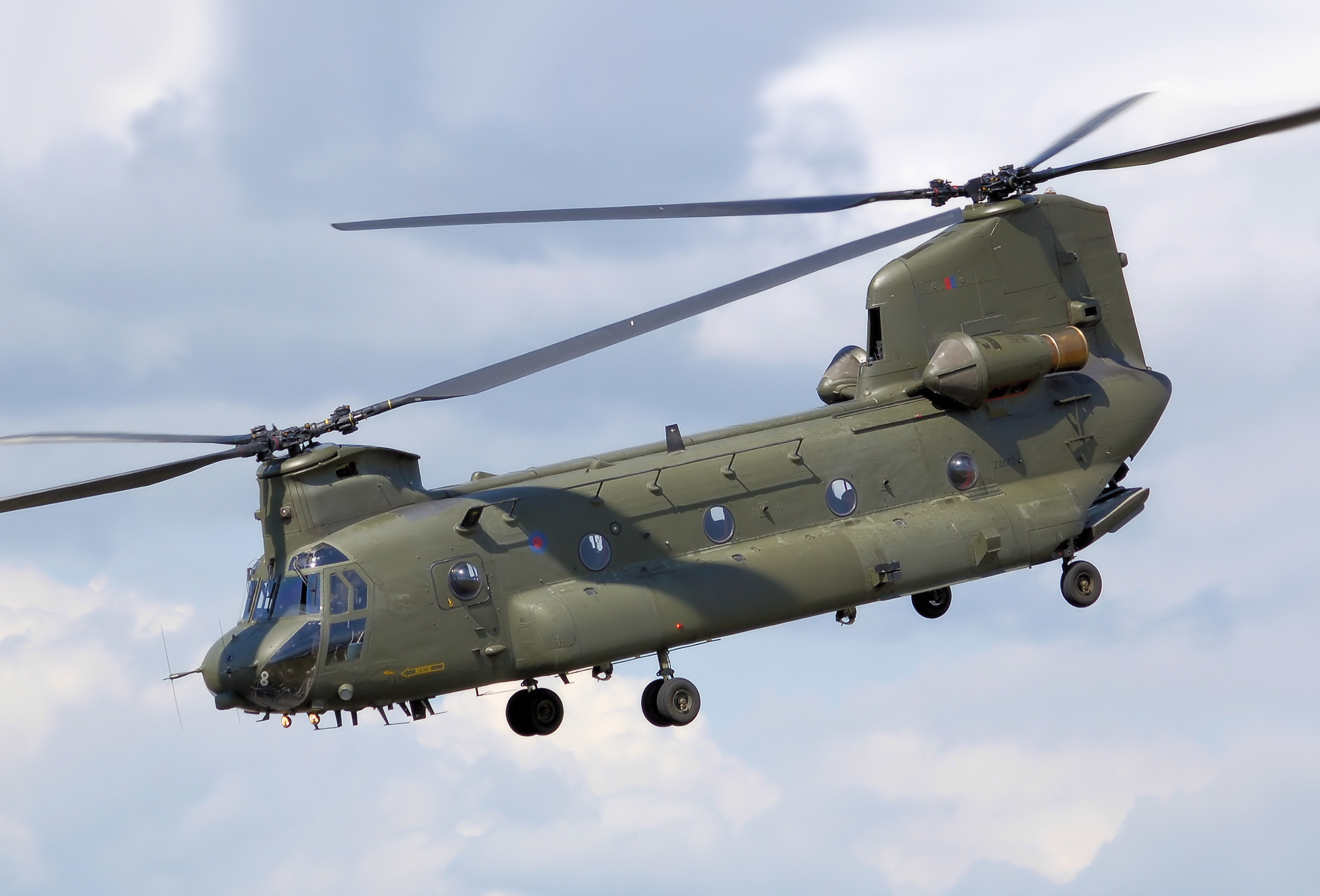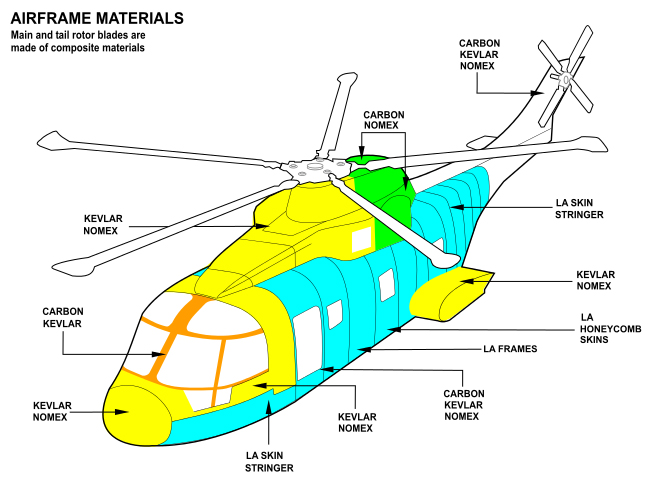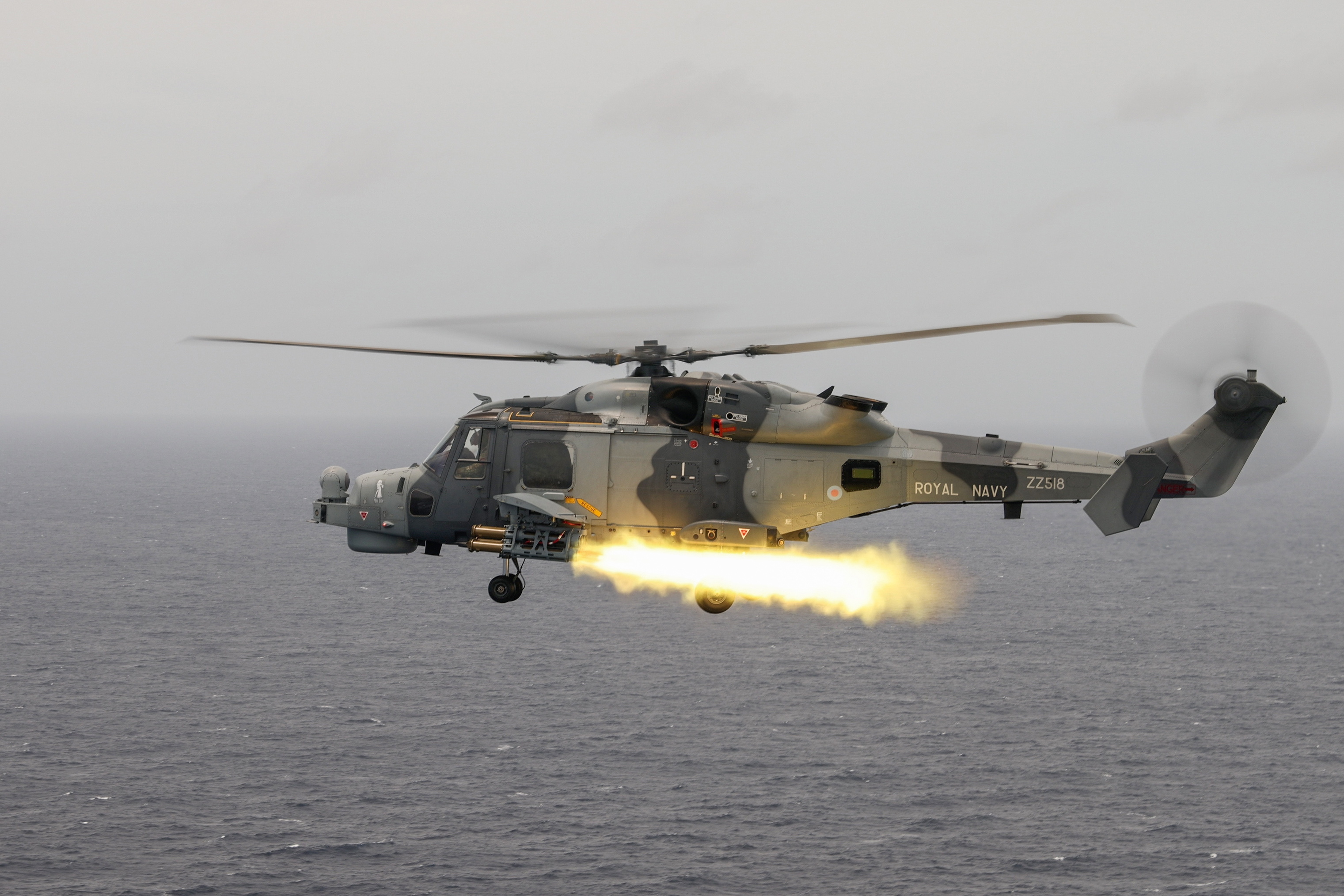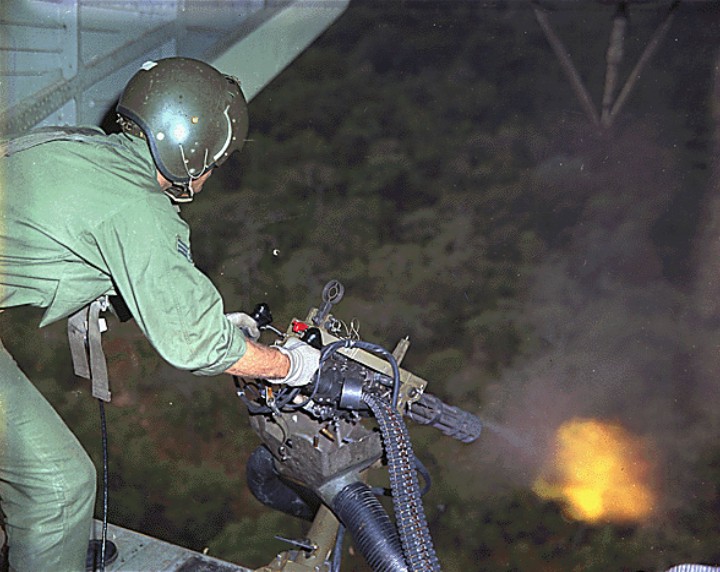|
Future Surface Combatant (Royal Navy)
The Type 26 frigate or City-class frigate is a class of frigate being built for the United Kingdom's Royal Navy, with variants also being built for the Australian and Canadian navies. The programme, known as the Global Combat Ship, was launched by the UK Ministry of Defence to partially replace the navy's thirteen Type 23 frigates, and for export. Its primary role is to conduct advanced anti-submarine warfare missions while supporting air defence and general purpose operations. The type is the first naval platform shared between Australia, Canada and the United Kingdom since the Tribal-class destroyer. The programme began in 1998, under what was then known as the Future Surface Combatant (FSC). However, by March 2010, this procurement programme had evolved to become the Global Combat Ship, following the announcement of a four-year, £127 million design contract being awarded to BAE Systems Maritime – Naval Ships. The design passed Main Gate 1 in early 2015, with the Demonstra ... [...More Info...] [...Related Items...] OR: [Wikipedia] [Google] [Baidu] |
BAE Systems Maritime – Naval Ships
BAE Systems Maritime – Naval Ships is a wholly owned subsidiary company of BAE Systems, specialising in naval surface shipbuilding and combat systems integration. One of three divisions of BAE Systems Maritime, along with BAE Systems Submarines and BAE Systems Maritime – Maritime Services, it is the largest shipbuilding company in the United Kingdom, one of the largest shipbuilders in Europe, and one of the world's largest builders of complex warships. It was originally formed as a joint stock subsidiary on 1 July 2008, with the merger of BAE Systems Surface Fleet Solutions and VT Shipbuilding, creating a new firm named BVT Surface Fleet. The new firm incorporated the BAE Systems Surface Fleet Solutions operated shipyards at Scotstoun and Govan on the River Clyde in Glasgow and the VT Shipbuilding facilities within the Naval Base at Portsmouth. BAE Systems subsequently acquired VT Group's share of the joint venture on 30 October 2009 and renamed the business BAE Systems ... [...More Info...] [...Related Items...] OR: [Wikipedia] [Google] [Baidu] |
CAMM (missile Family)
The CAMM (Common Anti-Air Modular Missile) is a family of surface-to-air missiles developed by MBDA UK for the United Kingdom. CAMM shares some common features and components with the ASRAAM air-to-air missile, but with updated electronics and an active radar homing seeker. As Sea Ceptor, CAMM is replacing the Sea Wolf missile on Type 23 frigates of the Royal Navy since 2018. As Land Ceptor, it is the missile part of the Sky Sabre air defence system, which since 2021 has been replacing the Rapier missile in British Army service. The system is also contributing to the updating of MBDA's ASRAAM in service with the Royal Air Force. Development The Common Anti-Air Modular Missile has its roots in a Technology Demonstration Programme (TDP), jointly funded by MBDA and the Ministry of Defence (MoD) as part of the United Kingdom's Future Local Area Air Defence System (FLAADS). FLAADS is part of a wider UK 'Team Complex Weapons' programme to deliver a variety of weapons and maintain UK s ... [...More Info...] [...Related Items...] OR: [Wikipedia] [Google] [Baidu] |
Boeing Chinook (UK Variants)
The Boeing Chinook is a large, tandem rotor helicopter operated by the Royal Air Force (RAF). A series of variants based on the United States Army's Boeing CH-47 Chinook, the RAF Chinook fleet is the largest outside the United States. RAF Chinooks have seen extensive service in the Falklands War, the Balkans, Northern Ireland, Iraq, and Afghanistan. The Chinook, normally based at RAF Odiham in England, provides heavy-lift support and transport across all branches of the British armed forces. The RAF has a total of sixty Chinooks in active inventory as of 2015. In 2018, the UK issued a request to the United States to purchase sixteen additional aircraft. The Chinook is expected to remain in RAF service until the 2040s. Design and development Chinook HC1 In March 1967, the United Kingdom placed an order for fifteen Boeing Vertol CH-47B Chinook to replace the Royal Air Force's Bristol Belvedere HC.1 fleet. In British service the new aircraft was to be designated as the Chinook ... [...More Info...] [...Related Items...] OR: [Wikipedia] [Google] [Baidu] |
AgustaWestland AW101
The AgustaWestland AW101 is a medium-lift helicopter in military and civil use. First flown in 1987, it was developed by a joint venture between Westland Helicopters in the United Kingdom and Agusta in Italy in response to national requirements for a modern naval utility helicopter. Several operators, including the armed forces of Britain, Denmark, and Portugal, use the name Merlin for their AW101 aircraft. It is manufactured at factories in Yeovil, England, and Vergiate, Italy. Licensed assembly work has also taken place in Japan and the United States. Prior to 2007, the aircraft had been marketed under the designation EH101. The original designation was EHI 01, from the name given to the Anglo-Italian joint venture—European Helicopter Industries—but a transcription error changed this to EH101. In 2000, Westland Helicopters and Agusta merged to form AgustaWestland, leading to the type's current designation. The AW101 entered into service in 1999 and has since replaced sev ... [...More Info...] [...Related Items...] OR: [Wikipedia] [Google] [Baidu] |
Lightweight Multirole Missile
Martlet is a lightweight air-to-surface, surface-to-air, and surface-to-surface missile developed by Thales Air Defence for the United Kingdom. It is named after a mythical bird from English heraldry that never roosts, the martlet. Developed as the Lightweight Multirole Missile (LMM) to meet the UK's "Future Air-to-Surface Guided Weapon (Light)" requirement, the Ministry of Defence (MOD) placed an initial order for 1,000 missiles with deliveries due to start in 2013. However, initial operating capability was considerably delayed and took place in 2021 with full operating capability anticipated in 2024. The missile was given the name "Martlet" in British service. Development The Lightweight Multirole Missile was initially conceived as Thales' response to the MoD's Future Air-to-Surface Guided Weapon (Light) FASGW(L) requirement. It was designed to be launched from a variety of naval, air and land platforms against a wide range of targets. High precision reduces collateral damage ... [...More Info...] [...Related Items...] OR: [Wikipedia] [Google] [Baidu] |
Sting Ray (torpedo)
The Sting Ray is a British acoustic homing lightweight torpedo (LWT) manufactured by GEC-Marconi, who were later bought out by BAE Systems. It entered service in 1983. Design and development In the 1950s the Royal Navy was equipped with British designed and built Mk 30 air-dropped torpedoes. These were passive homing weapons which relied on detecting the noise from submarine targets. However, as submarine noise levels decreased these weapons became ineffective. A design for a British Mk 31 torpedo which would have used active echo-location sonar failed to receive Government approval for production. US Mk 44 torpedoes were purchased for the Royal Navy in the 1960s to fill this role, and later replaced by US Mk 46 torpedoes. A desire not to be dependent on US torpedo purchases led to a research programme starting in 1964 to develop a British torpedo. Initially designated Naval and Air Staff Requirement (NASR) 7511, it was (much later in the late 1970s) designated the Sting R ... [...More Info...] [...Related Items...] OR: [Wikipedia] [Google] [Baidu] |
Sea Venom (missile)
Sea Venom is an Anglo-French lightweight anti-ship missile developed by MBDA to equip the French Navy and the Royal Navy. The missile is known as ''Anti-Navire Léger'' (ANL) in France and Sea Venom (formerly "Future Anti-Surface Guided Weapon (Heavy)") in the United Kingdom. While initial operating capability had been expected with the Royal Navy in 2022, Sea Venom missiles were reported deployed with Royal Navy Wildcat helicopters operating as part of the Royal Navy's carrier strike group in 2021. The first test launch, from an AS365 Dauphin helicopter of the French DGA defence procurement agency, was successfully conducted on 21 June 2017. [...More Info...] [...Related Items...] OR: [Wikipedia] [Google] [Baidu] |
AgustaWestland AW159
The AgustaWestland AW159 Wildcat (previously called the Future Lynx and Lynx Wildcat) is a British military helicopter. It is an improved version of the Westland Super Lynx designed to serve in the battlefield utility, search and rescue and anti-surface warfare roles. In British service, common variants are being operated by both the Royal Navy and British Army, having replaced their Lynx Mk.7/8/9 predecessors. The AW159 has also been offered to several export customers, and has been ordered by the Republic of Korea Navy and the Philippine Navy. Development Background In 1995, the British Government announced that the Royal Navy's existing Westland Lynx helicopters were to be replaced; at that point, the service was intended to operate an all- Merlin fleet. Despite this stated intent, Westland Helicopters continued to hold talks with the Ministry of Defence (MOD) to find a future role for the type during the late 1990s; the firm issued multiple proposals to either extend the l ... [...More Info...] [...Related Items...] OR: [Wikipedia] [Google] [Baidu] |
General Purpose Machine Gun
A general-purpose machine gun (GPMG) is an air-cooled, usually belt-fed machine gun that can be adapted flexibly to various tactical roles for light and medium machine guns. A GPMG typically features a quick-change barrel design calibered for various fully powered cartridges such as the 7.62×51mm NATO, 7.62×54mmR, 7.5×54mm French, 7.5×55mm Swiss and 7.92×57mm Mauser, and be configured for mounting to different stabilizing platforms from bipods and tripods to vehicles, aircraft, boats and fortifications, usually as an infantry support weapon or squad automatic weapon. History The general-purpose machine gun (GPMG) originated with the MG 34, designed in 1934 by Heinrich Vollmer of Mauser on the commission of Nazi Germany to circumvent the restrictions on machine guns imposed by the Treaty of Versailles. It was introduced into the Wehrmacht as an entirely new concept in automatic firepower, dubbed the ''Einheitsmaschinengewehr'', meaning "universal machine gun" in Germ ... [...More Info...] [...Related Items...] OR: [Wikipedia] [Google] [Baidu] |
Minigun
The M134 Minigun is an American 7.62×51mm NATO six-barrel rotary machine gun with a high rate of fire (2,000 to 6,000 rounds per minute). It features a Gatling-style rotating barrel assembly with an external power source, normally an electric motor. The "Mini" in the name is in comparison to larger-caliber designs that use a rotary barrel design, such as General Electric's earlier 20 mm M61 Vulcan, and "gun" for the use of rifle ammunition as opposed to autocannon shells. "Minigun" refers to a specific model of weapon that General Electric originally produced, but the term "minigun" has popularly come to refer to any externally powered rotary gun of rifle caliber. The term is sometimes used loosely to refer to guns of similar rates of fire and configuration, regardless of power source and caliber. The Minigun is used by several branches of the U.S. military. Versions are designated ''M134'' and ''XM196'' by the United States Army, and ''GAU-2/A'' and ''GAU-17/A'' by the U.S. ... [...More Info...] [...Related Items...] OR: [Wikipedia] [Google] [Baidu] |
Phalanx CIWS
The Phalanx CIWS (often spoken as "sea-wiz") is a gun-based close-in weapon system to defend military watercraft automatically against incoming threats such as aircraft, missiles, and small boats. It was designed and manufactured by the General Dynamics Corporation, Pomona Division,Thomas, Vincent C. ''The Almanac of Seapower 1987'' Navy League of the United States (1987) p.191 later a part of Raytheon. Consisting of a radar-guided Vulcan cannon mounted on a swiveling base, the Phalanx has been used by the United States Navy and the naval forces of 15 other countries. The US Navy deploys it on every class of surface combat ship, except the and . Other users include the British Royal Navy, the Royal Australian Navy, the Royal New Zealand Navy, the Royal Canadian Navy and the US Coast Guard (aboard its - and s). A land variant, the LPWS (Land Phalanx Weapon System), part of the C-RAM system, was developed. It was deployed to counter rocket, artillery and mortar attacks du ... [...More Info...] [...Related Items...] OR: [Wikipedia] [Google] [Baidu] |
30mm DS30M Mark 2 Automated Small Calibre Gun
The 30mm DS30M Mark 2 is a ship-protection system made by MSI-Defence Systems consisting of a 30mm Mark 44 Bushmaster II cannon on an automated mount. It was designed to defend Royal Navy frigates from fast inshore attack craft armed with short-range missiles, rocket-propelled grenades, machine guns, or explosives. Description The DS30M Mark 2 system consists of a 30mm Mark 44 Bushmaster II on a fully automated mount or via manual control with an off-mount electro-optical director (EOD). The gun and the EOD can be controlled from a remote operator console elsewhere on the ship. The weapon is a gyro-stabilized, electrically operated, self-contained, single cannon mount featuring a choice of weapon, control mode and sights. It has low magnetic, radar and infrared signatures with good availability, reliability and maintainability (ARM). [...More Info...] [...Related Items...] OR: [Wikipedia] [Google] [Baidu] |









